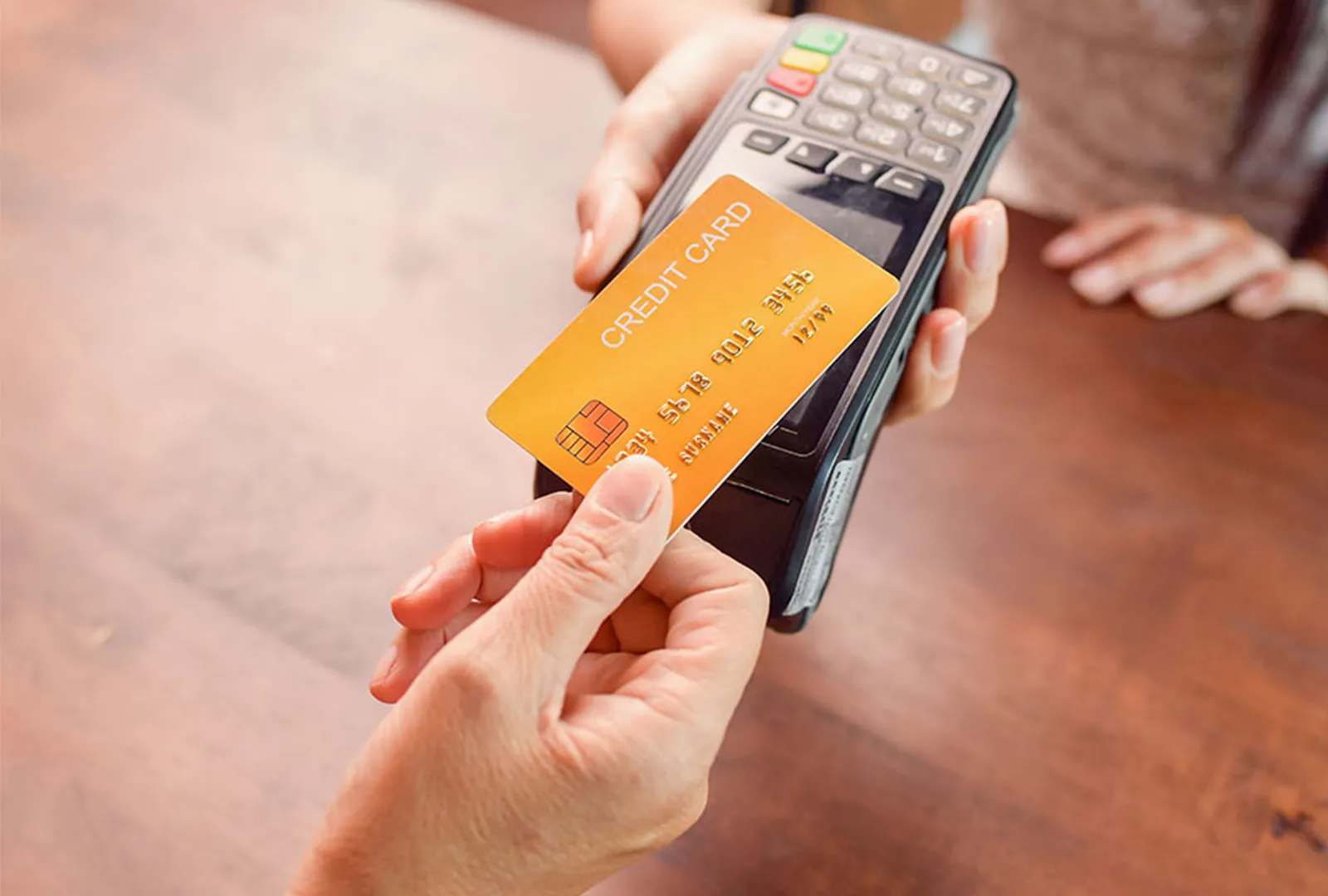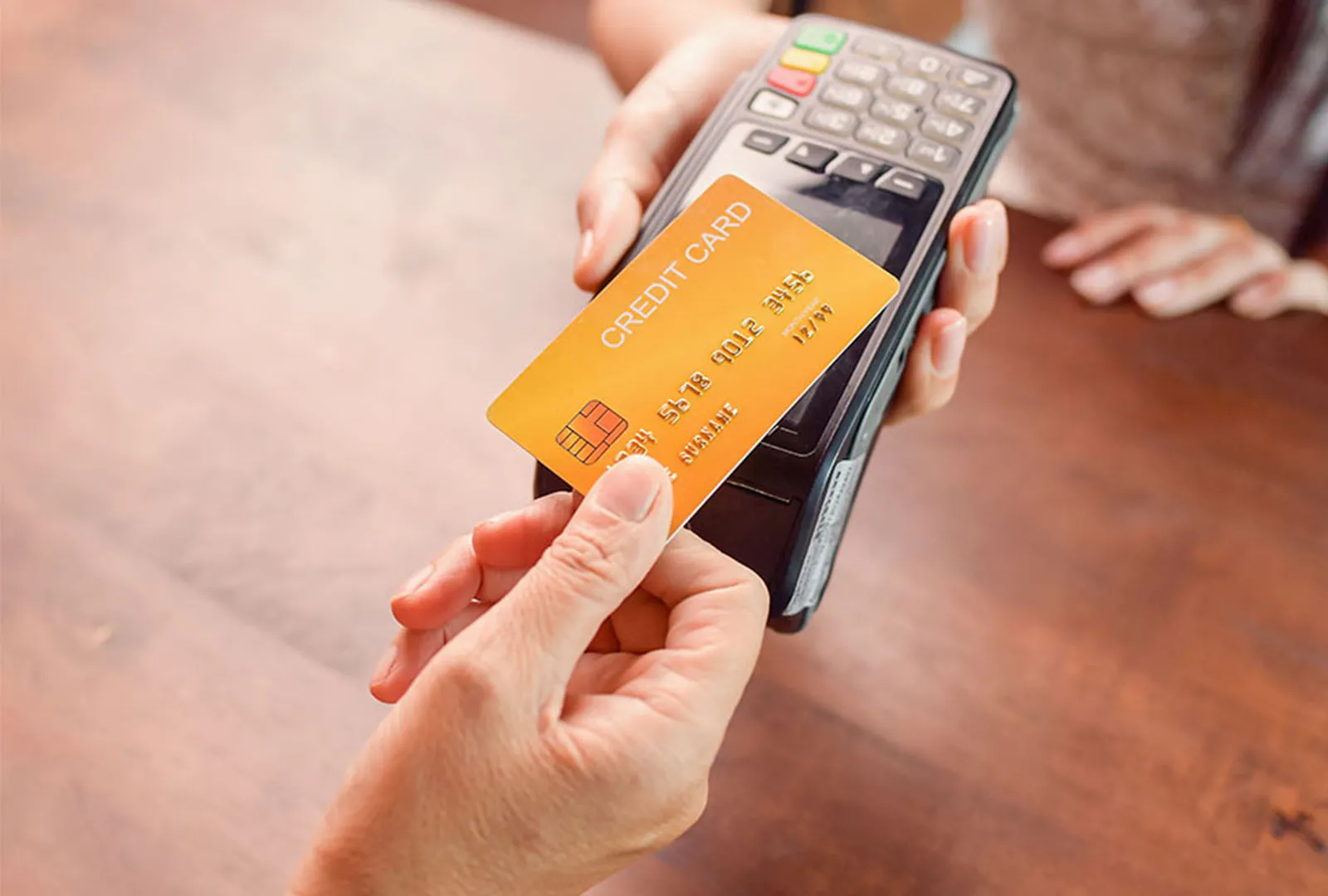Introduction
A cashless economy refers to a system in which financial transactions are conducted primarily through digital means, eliminating the need for physical currency. This shift towards cashless transactions has gained momentum in recent years, fueled by advancements in technology, changing consumer preferences, and the proliferation of digital payment options. In a cashless economy, individuals and businesses rely on electronic payment methods such as mobile payments, contactless payments, online banking, and cryptocurrencies to facilitate transactions.
The transition to a cashless economy offers numerous benefits, including increased convenience, improved security, cost savings, and enhanced financial inclusion. However, it also raises concerns and poses challenges related to privacy, data security, technological infrastructure, economic disruption, and the exclusion of vulnerable groups. Understanding how a cashless economy functions and addressing these concerns are critical to ensuring a smooth and successful transition.
This article explores the concept of a cashless economy and delves into the advantages and challenges associated with it. It also provides insights into the various digital payment methods that constitute a cashless economy and their potential impact on society. By examining both the benefits and concerns surrounding this paradigm shift, we can gain a comprehensive understanding of how a cashless economy can influence financial transactions and shape the future of commerce.
Benefits of a Cashless Economy
A cashless economy brings several advantages that can positively impact both individuals and the overall economy. Let’s explore some of the key benefits:
-
Digital Payments: One of the primary advantages of a cashless economy is the proliferation of digital payment methods. With the rise of mobile payment solutions, contactless payments, and online banking, individuals can easily make transactions anytime, anywhere, without the need for physical currency. This convenience saves time and effort, making transactions more efficient.
-
Convenience and Efficiency: Cashless transactions simplify the payment process, eliminating the need to carry cash, count coins, or search for exact change. It streamlines transactions in retail stores, restaurants, and other businesses, enhancing the overall customer experience. Moreover, digital payments can be processed quickly, reducing waiting times and enabling faster service delivery.
-
Improved Security: A cashless economy enhances security by reducing the risk of theft and counterfeit currency. With digital payments, the transaction records are stored digitally, making it easier to track and investigate any suspicious activity. Additionally, payment methods like contactless cards and mobile wallets often incorporate advanced security features such as encryption and biometric authentication, further protecting users’ financial information.
-
Cost Savings: Transitioning to a cashless economy can yield cost savings for both individuals and businesses. The production, transportation, and storage of physical currency involve significant expenses. By adopting digital payment methods, these costs can be minimized. Additionally, digital transactions eliminate the need for manual paperwork, reducing administrative expenses for businesses.
-
Financial Inclusion: A cashless economy promotes financial inclusion by providing access to financial services to previously underserved populations. With digital payment systems, individuals who may not have access to traditional banking services can now participate in the formal economy and conduct financial transactions. This inclusion can foster economic growth and empower individuals to manage their finances more efficiently.
Overall, a cashless economy offers numerous benefits, including convenience, efficiency, enhanced security, cost savings, and improved financial inclusion. Harnessing the potential of digital payment systems can revolutionize the way we transact and contribute to a more inclusive and prosperous society.
Digital Payments
Digital payments are at the forefront of the cashless economy, enabling individuals and businesses to conduct transactions electronically. This method of payment involves using various digital platforms and technologies to transfer money securely and conveniently. Here are some key aspects of digital payments:
-
Mobile Payments: Mobile payment solutions have gained widespread popularity, allowing users to make payments using their smartphones or other mobile devices. Through mobile payment apps, individuals can link their bank accounts or credit/debit cards to their devices, enabling seamless and secure transactions. These apps often use technologies such as near field communication (NFC) or quick response (QR) codes to facilitate contactless payments.
-
Online Banking: Online banking has revolutionized the way people manage their finances. With online banking platforms, individuals can access their bank accounts, transfer funds, pay bills, and make purchases online. Online banking provides a secure and convenient way to conduct financial transactions without the need for physical cash or visiting a physical bank branch.
-
E-Wallets: E-wallets, or digital wallets, are virtual storage platforms where individuals can store their payment information securely. E-wallets allow users to make digital payments by linking their bank accounts, credit cards, or even cryptocurrencies to the wallet. Users can then make payments by simply accessing the wallet through their mobile devices or other compatible devices.
-
Contactless Payments: Contactless payment technology enables users to make transactions by tapping or waving their payment devices near a contactless-enabled payment terminal. This technology primarily uses NFC technology, allowing for fast and convenient transactions. Contactless payments have gained significant popularity, especially in retail stores, restaurants, and public transportation systems.
-
Peer-to-Peer (P2P) Payments: Peer-to-peer payment platforms allow individuals to transfer money directly from one person to another without the need for intermediaries such as banks. These platforms facilitate instant payments, making it easy for friends, family, or even businesses to send and receive money digitally. Examples of popular P2P payment services include PayPal, Venmo, and Zelle.
Digital payments offer convenience, speed, and security. They eliminate the need for physical currency and enable seamless transactions across various platforms, making them an essential component of a cashless economy.
Convenience and Efficiency
In a cashless economy, convenience and efficiency are major driving forces behind the adoption of digital payment methods. The shift away from physical currency towards digital transactions offers several advantages in terms of convenience and efficiency. Let’s explore some of these benefits:
-
Simplified Payment Process: Digital payments simplify the payment process by eliminating the need for cash, coins, or exact change. Users can simply make payments using their smartphones, contactless cards, or other digital payment methods. This convenience saves time and effort, allowing individuals to complete transactions quickly and seamlessly.
-
24/7 Accessibility: Digital payment options provide round-the-clock accessibility. Unlike traditional banking hours, digital payment platforms are available 24/7, allowing users to make transactions at their convenience, whether it’s during business hours or in the middle of the night.
-
Faster Transaction Processing: Digital payments enable faster transaction processing compared to traditional methods. For example, contactless payments using NFC technology can be completed in seconds, significantly reducing waiting times at checkout counters. Online payments and peer-to-peer transfers are also processed quickly, facilitating swift and efficient transactions.
-
Automatic Record-Keeping: Digital payment methods often provide automatic record-keeping features. Transactions are recorded electronically, allowing individuals and businesses to easily track and review their payment history. This eliminates the need for manual record-keeping and makes it convenient to retrieve transaction details when needed.
-
Streamlined Online Shopping: Digital payments have revolutionized online shopping, making the process more seamless and efficient. With a few clicks, consumers can make purchases on e-commerce platforms, eliminating the need to enter payment information repeatedly. This quick and easy checkout process enhances the overall online shopping experience.
Convenience and efficiency are among the key factors driving the adoption of digital payments. The ability to make transactions quickly, access payment methods 24/7, and simplify the payment process have transformed the way individuals and businesses conduct financial transactions in a cashless economy.
Improved Security
One of the significant benefits of a cashless economy is the improved security offered by digital payment methods. The shift away from physical cash towards digital transactions enhances security in several ways. Here are some key aspects of how a cashless economy improves security:
-
Reduced Risk of Theft: A cashless economy reduces the risk of theft associated with carrying physical currency. With digital payments, people can make transactions without carrying large sums of money, making them less susceptible to theft and robbery.
-
Transaction Tracking: Digital payment methods often provide transaction history and electronic receipts, allowing users to track their spending and verify their transactions. This feature enables individuals to identify and report any unauthorized or fraudulent activities promptly.
-
Advanced Encryption: Digital payment platforms employ sophisticated encryption techniques to protect users’ sensitive financial information. This encryption adds a layer of security to ensure that the data transmitted during transactions remains confidential and cannot be easily accessed by unauthorized individuals.
-
Authentication Mechanisms: Many digital payment methods utilize multi-factor authentication to verify the user’s identity. This can include passwords, PINs, biometric authentication (such as fingerprint or facial recognition), or two-factor authentication (requiring a combination of something the user knows, such as a password, and something the user possesses, such as a mobile device).
-
Secure Payment Technologies: Contactless payment technologies, such as near field communication (NFC), have built-in security measures. These include tokenization, where a unique token is generated for each transaction, ensuring that sensitive card details are not transmitted or stored with the merchant.
Overall, the transition to a cashless economy enhances security by reducing the risk of theft, enabling transaction tracking, employing advanced encryption, implementing authentication mechanisms, and utilizing secure payment technologies. These security measures provide individuals with greater peace of mind during financial transactions in a digital world.
Cost Savings
Transitioning to a cashless economy can result in significant cost savings for both individuals and businesses. Here are some ways in which a cashless economy can lead to financial savings:
-
Reduced Production and Handling Costs: The production, distribution, and handling of physical currency involve expenses for governments, financial institutions, and businesses. In a cashless economy, the need for producing and distributing physical cash is minimized or eliminated, resulting in cost savings across the board.
-
Lower Transaction Costs: Digital payments can be more cost-effective compared to traditional payment methods. Cash transactions often incur additional costs, such as counting, sorting, and safeguarding physical currency. In contrast, digital payments involve lower transaction fees, especially for online transactions, reducing costs for both individuals and businesses.
-
Administrative Efficiency: Going cashless can streamline administrative tasks associated with financial transactions. Businesses no longer need to spend time and resources on manual paperwork, such as counting, reconciling, and depositing cash. This increased administrative efficiency translates into cost savings and allows businesses to focus on core operations.
-
Minimized Risk of Counterfeit Currency: Physical cash can be prone to counterfeiting, leading to financial losses for individuals and businesses. By shifting to digital payments, the risk of counterfeit currency is virtually eliminated, saving businesses from potential losses associated with accepting counterfeit notes.
-
Incentives and Rewards: Cashless transactions often come with incentives and rewards programs. Credit cards, debit cards, and digital payment platforms offer cashback, reward points, discounts, or other benefits for using their services. Taking advantage of these incentives can lead to financial savings for consumers.
By embracing a cashless economy, individuals and businesses can benefit from reduced production and handling costs, lower transaction fees, improved administrative efficiency, minimized risk of counterfeit currency, and opportunities for incentives and rewards. These cost savings contribute to overall financial well-being and can drive economic growth.
Financial Inclusion
A cashless economy has the potential to promote financial inclusion by providing access to formal financial services for individuals who were previously underserved or excluded. Here are some ways in which a cashless economy can contribute to greater financial inclusion:
-
Access to Basic Financial Services: Digital payment methods allow individuals to access basic financial services even in areas with limited physical banking infrastructure. With a smartphone and internet connectivity, people can open digital bank accounts, make digital payments, and access other financial services without needing to visit a physical bank branch.
-
Microtransactions and Small-Value Payments: Digital payment platforms enable microtransactions and small-value payments, which can be beneficial for individuals engaged in informal or small-scale businesses. These transactions, which might be impractical or costly with physical cash, can be easily facilitated through digital payment systems.
-
Financial Empowerment: A cashless economy empowers individuals to take control of their financial lives. They can track their transactions, monitor their spending, and make informed financial decisions. This increased financial awareness and access to digital payment services can help individuals establish creditworthiness and improve their financial well-being.
-
Remote and Rural Accessibility: Digital payments bridge the gap for individuals in remote or rural areas who may face challenges in accessing traditional banking services. With digital payment methods, they can participate in the formal economy, receive payments digitally, and access various financial services, such as microloans or insurance.
-
Financial Education and Inclusion Programs: The transition to a cashless economy often involves financial education and inclusion programs. These programs educate individuals on the benefits of digital payments, how to use digital payment platforms, and how to manage their finances effectively. They aim to empower marginalized communities and ensure that no one is left behind in the digital transformation.
A cashless economy has the potential to break down barriers to financial inclusion, providing access to basic financial services, enabling microtransactions, promoting financial empowerment, bridging remote and rural accessibility gaps, and fostering financial education initiatives. By embracing a cashless economy, societies can foster economic growth, reduce financial inequality, and create opportunities for individuals and businesses to thrive.
Concerns and Challenges
While the transition to a cashless economy offers numerous benefits, it also raises concerns and poses certain challenges. It’s important to address these concerns to ensure a smooth and inclusive transition. Here are some of the key concerns and challenges associated with a cashless economy:
-
Privacy and Data Security: The collection and storage of personal financial data in digital payment systems raise concerns about privacy and data security. Safeguarding sensitive financial information from cyber threats and ensuring proper data protection measures are in place is crucial to maintaining users’ trust in cashless transactions.
-
Technological Infrastructure: The successful implementation of a cashless economy relies on robust and reliable technological infrastructure. Ensuring widespread access to internet connectivity, seamless digital payment systems, and secure technology platforms is essential to prevent disruptions and ensure equal access for all individuals and businesses.
-
Economic Disruption: The shift to a cashless economy can lead to economic disruption, particularly for individuals and businesses that heavily rely on cash transactions. It is crucial to address this disruption by providing support and resources for individuals and businesses to adapt to the new digital payment ecosystem.
-
Exclusion of Vulnerable Groups: While digital payments offer convenience, individuals from economically disadvantaged backgrounds or with limited access to technology may be left behind. It’s important to address the digital divide and ensure that adequate measures are taken to include and support these vulnerable groups in the cashless economy.
-
Adoption and Behavioral Changes: Shifting from a cash-based society to a cashless economy requires significant behavioral changes. Some individuals may be resistant to change or may face challenges in adapting to digital payment methods. Promoting education, increasing awareness, and providing training programs can help individuals and businesses adopt digital payments more smoothly.
Addressing these concerns and challenges is essential to create a cashless economy that prioritizes user privacy, ensures accessible technological infrastructure, mitigates economic disruptions, includes vulnerable groups, and facilitates a smooth transition for individuals and businesses. By proactively addressing these issues, a cashless economy can be more inclusive, secure, and successfully embraced by society.
Privacy and Data Security
Privacy and data security are significant concerns when it comes to the transition to a cashless economy. The collection, storage, and transmission of personal financial data through digital payment systems raise questions about the protection of individuals’ privacy and the security of their sensitive information. Here are some key aspects related to privacy and data security in a cashless economy:
Data Protection: Safeguarding sensitive financial data is crucial to maintaining individuals’ trust in digital payment systems. Payment service providers must implement robust data protection measures to ensure the secure storage and transmission of personal information. This includes measures such as encryption, authentication protocols, and secure data centers to protect against unauthorized access and data breaches.
User Control and Consent: It’s essential for individuals to have control over their financial data and be able to give informed consent for its use. Clear and transparent privacy policies should be in place, outlining how personal data is collected, stored, and shared. Individuals should have the ability to opt in or out of data sharing practices, ensuring their personal information is used only for legitimate purposes with their informed consent.
Third-Party Risks: Digital payment systems often involve the participation of multiple third-party service providers, such as banks, payment processors, and technology companies. The sharing of data across these entities can introduce additional security risks. It is important to establish strong contractual agreements and protocols to ensure that all parties involved in the digital payment ecosystem adhere to stringent data security standards.
Cybersecurity Threats: As digital payment usage increases, so does the risk of cyber threats. Individuals and businesses are susceptible to phishing attempts, malware attacks, and identity theft. To mitigate these risks, robust cybersecurity practices and user awareness programs should be implemented, including educating users about common threats, providing guidance on secure online behavior, and implementing multi-factor authentication for added security.
Regulatory Compliance: Governments and regulatory bodies play a crucial role in ensuring privacy and data security in a cashless economy. Implementing robust data protection laws and regulations that outline the responsibilities of all stakeholders, including digital payment service providers, can provide a necessary framework to protect individuals’ privacy rights and hold entities accountable for any data breaches or privacy violations.
Addressing privacy and data security concerns is paramount to building trust in digital payment systems. Striking a balance between convenience and privacy protection is crucial in order to create a cashless economy that respects individuals’ privacy rights and provides secure transactions for all users.
Technological Infrastructure
The successful implementation of a cashless economy relies heavily on robust and reliable technological infrastructure. The availability of adequate technological infrastructure is essential to ensure seamless digital payment transactions and equal access for all individuals and businesses. Here are some key considerations related to technological infrastructure in a cashless economy:
Internet Connectivity: Reliable and affordable internet connectivity is a prerequisite for a cashless economy. Access to high-speed internet enables individuals to use digital payment platforms, access online banking services, and make transactions seamlessly. Ensuring widespread internet access, especially in remote and rural areas, is critical to bridge the digital divide and provide equal opportunities for financial inclusion.
Payment Networks and Systems: The infrastructure supporting digital payment networks must be robust and scalable to handle a high volume of transactions securely. Payment processors, banks, and technology providers need to invest in infrastructure that can accommodate the increased demand for digital payments and ensure uninterrupted service availability.
Point-of-Sale (POS) Infrastructure: A cashless economy requires a sufficient number of point-of-sale (POS) devices that support digital payment methods. Businesses, especially small and micro-enterprises, need access to affordable and reliable POS devices that can accept various forms of digital payments, including contactless cards, mobile payments, and QR code-based payments.
Security and Fraud Prevention: The technological infrastructure must incorporate robust security measures to protect against fraud and cyber threats. This includes encryption protocols, authentication mechanisms, and real-time fraud detection systems to ensure secure transactions and safeguard users’ financial information. Continuous monitoring and upgrading of security infrastructure are essential to stay ahead of evolving threats.
User-Friendly Interfaces: The technological infrastructure of digital payment systems should prioritize user-friendly interfaces that are intuitive and easy to navigate. User-friendly interfaces enhance the adoption and usage of digital payment methods, ensuring that individuals, including older adults and less tech-savvy individuals, can comfortably participate in a cashless economy.
Interoperability and Standards: To promote a seamless and interoperable cashless ecosystem, standardization of protocols and interfaces is crucial. Establishing widely accepted standards helps ensure compatibility between different digital payment systems, allowing users to transact across various platforms and ensuring a consistent user experience.
Investing in and maintaining robust technological infrastructure is critical for the successful implementation of a cashless economy. Ensuring widespread access to reliable internet connectivity, building secure payment networks, providing user-friendly interfaces, and complying with interoperability standards contribute to a seamless and inclusive cashless ecosystem that benefits individuals and businesses alike.
Economic Disruption
The transition to a cashless economy can bring about significant economic disruption, particularly for individuals and businesses that heavily rely on cash transactions. It’s important to address these potential disruptions to ensure a smooth and inclusive transition. Here are some key considerations related to economic disruption in a cashless economy:
Shift in Business Models: The shift to digital payments may require businesses to adapt their business models. For businesses that primarily deal with cash transactions, embracing digital payment methods may involve changes in accounting practices, financial management systems, and customer payment preferences. It’s crucial to provide support and resources to businesses to enable them to make this transition effectively.
Job Displacement: The automation of transactions through digital payments can potentially lead to job displacement in sectors that heavily rely on cash handling and processing. For example, with the implementation of self-checkout systems and mobile payment options, there may be a reduced need for cashiers in retail stores. This disruption calls for measures to support displaced workers and provide retraining opportunities in emerging sectors.
Informal Economy Challenges: The informal economy, which heavily relies on cash transactions, may face significant challenges during the transition to a cashless economy. Informal workers, such as street vendors or small-scale farmers, may encounter difficulties in adopting digital payment methods due to limited access to technology or bank accounts. Addressing these challenges will require targeted efforts to ensure the inclusion and support of informal workers in the digital payment ecosystem.
Financial Infrastructure Adjustments: Adapting to a cashless economy requires adjustments to financial infrastructure and supporting systems. This includes upgrading payment networks, enhancing cybersecurity measures, and establishing mechanisms for interoperability between different digital payment platforms. Investing in these adjustments will help maintain the stability and efficiency of the financial system during the transition.
Inclusive Approach: Mitigating economic disruption requires an inclusive approach that considers the needs and challenges of all stakeholders. This includes providing financial literacy programs, support for businesses in the transition to digital payments, and fostering partnerships between government bodies, financial institutions, and technology providers to create a supportive ecosystem for cashless transactions.
While the transition to a cashless economy offers numerous benefits, it’s crucial to address the potential economic disruptions that may arise. By proactively addressing these challenges, supporting affected individuals and businesses, and fostering an inclusive approach, a smooth and successful transition can be achieved, resulting in a more efficient and inclusive economic landscape.
Exclusion of Vulnerable Groups
As the world moves towards a cashless economy, it is crucial to ensure that vulnerable groups are not excluded from participating in the digital payment ecosystem. While digital payments offer numerous benefits, certain segments of the population may face challenges in accessing and utilizing these systems. Here are some key considerations regarding the potential exclusion of vulnerable groups:
Limited Access to Technology: Individuals from low-income households or rural areas may have limited access to smartphones, computers, or high-speed internet required for digital payments. Bridging the digital divide through initiatives that provide affordable devices and internet connectivity is essential to ensure equal access to digital payment services.
Technological Literacy: Older adults or individuals with lower levels of technological literacy may face difficulties in adopting digital payment methods. Promoting digital literacy programs and providing user-friendly interfaces with clear instructions and support can help overcome these barriers and ensure inclusive access to digital payment systems.
Lack of Banking Services: A significant portion of the population, especially in developing countries, remains unbanked or underbanked. Limited access to banking services poses challenges for these individuals to participate in digital payments. Encouraging the expansion of banking services and supporting the development of alternative financial solutions, such as mobile banking, can help include the unbanked population in the cashless economy.
Language and Cultural Barriers: Language and cultural barriers can hinder the adoption of digital payment systems among immigrant or minority communities. Offering support in various languages, providing targeted outreach programs, and ensuring culturally sensitive customer service can help bridge these gaps and promote inclusion for all communities.
Financial Education and Awareness: Lack of financial literacy and awareness can hinder individuals from understanding the benefits and functionalities of digital payment systems. Establishing financial education programs that teach basic money management skills and the benefits of digital payments can empower individuals to navigate the cashless economy more effectively.
Inclusive Policy Frameworks: Governments and regulatory bodies play a crucial role in ensuring inclusivity in a cashless economy. Implementing policies that address the needs of vulnerable groups, promoting regulations that protect consumers from discrimination, and establishing guidelines for inclusive practices by financial institutions and technology providers are essential for fostering an inclusive digital payment ecosystem.
Addressing the concerns surrounding the exclusion of vulnerable groups requires a collaborative effort between government entities, financial institutions, technology providers, and relevant stakeholders. By proactively implementing initiatives to enhance access, affordability, and awareness, society can ensure that the benefits of digital payments are accessible to all, fostering financial inclusion and reducing inequalities in the cashless economy.
Adoption and Behavioral Changes
The transition to a cashless economy not only requires the availability of digital payment systems but also necessitates adoption and behavioral changes among individuals and businesses. Educating and encouraging the adoption of digital payment methods is crucial for the success of a cashless society. Here are some key considerations regarding adoption and behavioral changes:
Education and Awareness: Providing comprehensive education and awareness campaigns is essential to familiarize individuals and businesses with the benefits and functionalities of digital payment systems. These campaigns should address concerns, highlight security measures, and demonstrate the ease and convenience of using digital payments.
Incentives and Rewards: Offering incentives and rewards programs can motivate individuals and businesses to embrace digital payments. Cashback offers, reward points, discounts, or exclusive deals for using digital payment methods can help shift behaviors and encourage adoption. These incentives provide tangible benefits and further demonstrate the advantages of going cashless.
Retailer Support: Encouraging retailers and businesses to accept digital payment methods is crucial for driving adoption. Governments and industry associations can offer support, such as subsidizing the acquisition of point-of-sale (POS) devices or providing training programs, to help businesses facilitate seamless digital transactions.
Phasing Out Cash Transactions: Gradually phasing out or limiting cash transactions can incentivize individuals and businesses to adopt digital payment methods. This approach can be supported by providing alternative payment options, enhancing the accessibility of digital payment systems, and ensuring a seamless user experience.
Overcoming Resistance to Change: Some individuals may be resistant to change, particularly when it comes to adopting new payment methods. Addressing concerns, providing personalized assistance, and offering support for the transition can help individuals overcome their resistance and embrace the benefits of digital payments.
Building Trust and Confidence: Building trust and confidence in digital payment systems is crucial. This can be achieved through transparent communication, reliable customer support, and ensuring the security and privacy of users’ financial information. Resolving any issues promptly and maintaining a consistent user experience are essential in gaining trust and promoting adoption.
Evolving Regulatory Frameworks: Regulatory frameworks should keep pace with the transition to a cashless economy. Governments should adapt regulations to facilitate the growth of digital payments while safeguarding consumer rights, ensuring data privacy, and protecting against fraudulent activities. These regulations should foster an environment that encourages innovation and competition among digital payment providers.
Adoption of digital payment methods requires a collective effort to educate, incentivize, and address concerns among individuals and businesses. By providing education and support, building trust, aligning regulatory frameworks, and gradually phasing out cash transactions, societies can encourage widespread adoption of digital payments and embrace the benefits of a cashless economy.
How Will a Cashless Economy Function?
A cashless economy functions through various digital payment methods that enable individuals and businesses to conduct financial transactions electronically. Here are some key ways in which a cashless economy operates:
-
Mobile Payments: With the widespread use of smartphones, mobile payment solutions have become increasingly popular. Through dedicated mobile payment apps, individuals can link their bank accounts or credit/debit cards to their devices. This enables them to make payments by simply tapping their phones or scanning QR codes at participating merchants.
-
Contactless Payments: Contactless payment methods, such as contactless cards or wearable devices, utilize near field communication (NFC) technology. Users can make payments by waving or tapping their cards or devices near a contactless-enabled payment terminal. This method ensures quick transactions without the need for physical contact or inserting cards into terminals.
-
Online Payments: Online payment systems allow individuals to make purchases and transfer funds electronically. This can be done through secure payment gateways on e-commerce websites or by using online banking platforms. Users can enter their payment information and authorize transactions from the comfort of their own devices, providing a convenient and efficient way to make payments.
-
Cryptocurrencies: Cryptocurrencies, such as Bitcoin, have emerged as an alternative form of digital payment. These decentralized digital currencies utilize blockchain technology to enable secure and anonymous transactions. Users store their cryptocurrencies in digital wallets and can make peer-to-peer transactions without the need for intermediaries or traditional banking systems.
-
Biometric Identification: Biometric identification, such as fingerprints or facial recognition, can be incorporated into digital payment systems for enhanced security and convenience. Users can link their biometric data to their digital payment accounts, allowing them to authorize transactions through biometric authentication, eliminating the need for passwords or PINs.
In a cashless economy, these digital payment methods enable individuals and businesses to transact seamlessly without the need for physical cash. The funds are transferred electronically, and transaction records are securely stored digitally, allowing for efficient tracking and monitoring.
Financial institutions, payment processors, and technology companies play vital roles in building and maintaining the infrastructure that enables the functioning of a cashless economy. They ensure the secure movement of funds, the interoperability of different payment systems, and the development of innovative solutions to meet the evolving needs of individuals and businesses.
As technology continues to advance, new digital payment methods may be introduced, offering even greater convenience and security. Embracing these technologies and continuously adapting to changing consumer preferences will shape the future of a cashless economy.
Mobile Payments
Mobile payments have revolutionized the way individuals conduct financial transactions in a cashless economy. With the widespread use of smartphones, mobile payment solutions have become increasingly popular and widely adopted. Here are some key aspects of mobile payments:
Mobile Wallet Apps: Mobile payment systems typically rely on dedicated mobile wallet apps. These apps allow users to link their bank accounts, credit cards, or prepaid cards to their smartphones, creating a virtual wallet. Users can then make payments by simply tapping their phones or scanning QR codes at participating merchants.
Near Field Communication (NFC): Many mobile payment methods utilize Near Field Communication (NFC) technology, which allows for contactless transactions. By bringing their smartphones close to contactless payment terminals, users can authorize payments without the need for physical contact or inserting cards into terminals.
Peer-to-Peer Payments: Mobile payment apps often include peer-to-peer (P2P) payment functionality, allowing individuals to send money directly to one another. This is particularly useful for splitting bills, repaying debts, or sending money to friends and family members conveniently and quickly.
Mobile Banking: Besides facilitating payments, mobile payment apps often offer additional banking features, such as balance inquiries, transaction history, and fund transfers. Users can access their bank accounts and perform various financial tasks with ease through their mobile devices.
Security Measures: Mobile payment systems prioritize security to protect users’ financial information. Encrypted transactions, tokenization, and biometric authentication (such as fingerprint or facial recognition) are commonly implemented to ensure secure and private mobile payments.
Convenience and Accessibility: Mobile payments provide unmatched convenience and accessibility. Users can make payments anytime and anywhere they have a network connection. The ability to store multiple payment methods in a single mobile wallet app eliminates the need to carry physical cards or cash, streamlining the payment process.
Mobile payments have gained significant traction due to their convenience, speed, and security. As smartphones become increasingly prevalent, mobile payment systems continue to advance, offering innovative features that meet the evolving needs of individuals and businesses. The continuous growth and evolution of mobile payment technology are shaping the landscape of the cashless economy.
Contactless Payments
Contactless payments are a popular form of digital payment in a cashless economy, offering speed, convenience, and enhanced security. Contactless payment methods utilize Near Field Communication (NFC) technology, allowing individuals to make transactions by simply waving or tapping their payment device near a contactless-enabled payment terminal. Here are some key aspects of contactless payments:
Tap-and-Go Transactions: Contactless payment methods enable users to complete transactions quickly and easily. By tapping their contactless-enabled cards, smartphones, smartwatches, or other wearable devices on a payment terminal, users can authorize payments without the need for physical contact or inserting their cards into a reader.
NFC Technology: Near Field Communication (NFC) enables devices to establish a wireless connection when they are in close proximity. This technology allows for short-range communication between the payment device and the contactless terminal, securely transmitting the payment information between the two devices.
Secure and Efficient: Contactless payments incorporate security features such as encryption and tokenization to protect users’ financial information. Tokenization, in particular, replaces the actual card information with a unique identifier (token), ensuring that sensitive card details are not stored or transmitted during the transaction, minimizing the risk of data breaches.
Speed and Convenience: Contactless payments offer a seamless and efficient payment experience. The tap-and-go nature of these transactions eliminates the need for customers to fumble with cash, count change, or sign receipts. Contactless payments are typically completed within seconds, reducing wait times and enabling faster service delivery, especially in busy retail environments.
Increasing Merchant Acceptance: Contactless payment technology is becoming widely adopted by merchants across various industries. Retailers, restaurants, public transportation systems, and other businesses are upgrading their payment terminals to accept contactless payments, providing customers with a convenient payment option.
Widespread User Adoption: Contactless payments have gained widespread user adoption due to their ease of use and acceptance. With the increasing presence of contactless-enabled cards and mobile wallets, more individuals are embracing the convenience of tap-and-go transactions, making contactless payments a preferred method of payment.
Contactless payments have transformed the way individuals transact, offering a faster and more convenient alternative to traditional payment methods. The widespread acceptance of contactless payments by merchants, coupled with the growing user adoption of contactless-enabled devices, is driving the expansion of contactless payment systems, further fueling the shift towards a cashless economy.
Online Payments
Online payments have revolutionized the way individuals and businesses conduct financial transactions in a cashless economy. The ability to make purchases, transfer funds, and pay bills electronically has transformed the landscape of commerce. Here are some key aspects of online payments:
Secure Payment Gateways: Online payments typically involve the use of secure payment gateways. These gateways encrypt sensitive payment information during transmission, ensuring the security and privacy of users’ financial data. With secure payment gateways, individuals can shop online confidently, knowing that their personal and payment details are protected.
E-commerce Platforms: E-commerce platforms have enabled individuals to make purchases online using various payment methods. Online shopping has become increasingly popular due to its convenience and the ability to browse and compare products from the comfort of one’s own home. E-commerce platforms integrate secure payment systems to facilitate seamless online transactions.
Online Banking: Traditional banks have adapted to the digital landscape by providing online banking services. Through online banking platforms, individuals can access their accounts, view balances, transfer funds, and make payments electronically. Online banking has become an integral part of a cashless economy, providing individuals with greater control over their finances.
Payment Wallets: Digital payment wallets or e-wallets provide individuals with a virtual space to store their payment information securely. Users can link their bank accounts, credit cards, or prepaid cards to their e-wallets, enabling them to make online payments more easily. Payment wallets often offer additional features, such as loyalty programs or peer-to-peer payment options.
Seamless Checkout Process: Online payments simplify the checkout process for individuals making purchases online. Users can save their payment information securely, leading to faster and more streamlined transactions. One-click payments or saved card details eliminate the need to re-enter payment information for repeat purchases, enhancing convenience and expediting the payment process.
Global Accessibility: Online payments facilitate global transactions, allowing individuals to make purchases from international websites or send money across borders. This global accessibility has opened up new opportunities for businesses and consumers to engage in cross-border trade, fostering economic growth and expanding market reach.
Online payments have become an integral part of the cashless economy, enabling individuals and businesses to transact seamlessly across distances. The convenience, security, and accessibility of online payments continue to drive the growth of e-commerce and reshape the way we conduct financial transactions in the digital age.
Cryptocurrencies
Cryptocurrencies have emerged as a unique form of digital payment in the cashless economy. Based on decentralized blockchain technology, cryptocurrencies offer the potential for secure, anonymous, and borderless transactions. Here are some key aspects of cryptocurrencies:
Decentralized Nature: Cryptocurrencies operate on decentralized networks, such as blockchain, where transactions are verified and recorded across a distributed network of computers. This decentralized nature eliminates the need for intermediaries, such as banks, and allows for peer-to-peer transactions without central control.
Secure and Anonymous Transactions: Cryptocurrencies prioritize security by using advanced cryptography to secure transactions. The use of public-private key pairs ensures that only the intended recipient can access the funds. Transactions made with cryptocurrencies can provide a level of anonymity if users do not disclose their real-world identities.
Volatile Value: Cryptocurrencies are known for their volatility, with their values often experiencing significant fluctuations. This volatility can be attributed to factors such as market demand, investor sentiment, regulatory changes, and technological advancements. Investors and users of cryptocurrencies should be aware of the risks associated with price fluctuations.
Global Accessibility: Cryptocurrencies facilitate borderless transactions, enabling individuals to send and receive funds across geographical boundaries without the need for traditional banking systems. This feature has the potential to promote financial inclusion, particularly in regions with limited access to banking services.
Alternative Investments: Cryptocurrencies have gained prominence as alternative investments. Investors can buy and hold cryptocurrencies as a form of long-term investment or actively trade them on cryptocurrency exchanges. However, it’s essential to understand the risks associated with the volatile nature of cryptocurrencies and exercise caution in investing.
Emerging Technology: Cryptocurrencies are still considered to be in the early stages of development. As the technology advances, new cryptocurrencies continue to emerge, offering innovative features and addressing limitations of earlier iterations. This ongoing development is driving exploration in various industries, including finance, supply chain management, and decentralized applications.
Regulatory Considerations: Due to the unique nature of cryptocurrencies and the potential risks associated with them, regulatory frameworks and oversight have been implemented by governments and authorities. Regulations vary across jurisdictions, and policymakers aim to strike a balance between promoting innovation and protecting individuals and investors from fraudulent activities or illegal transactions.
Cryptocurrencies offer a unique proposition in the cashless economy, providing individuals with a decentralized, secure, and potentially borderless means of conducting transactions. However, it’s important for users to understand the risks, market dynamics, and regulatory frameworks associated with cryptocurrencies before engaging in their use or investment.
Biometric Identification
Biometric identification is an innovative approach to enhancing security and convenience in the cashless economy. By utilizing unique physical or behavioral characteristics of individuals, such as fingerprints, facial recognition, or iris scans, biometric identification provides a reliable and efficient method for authorizing transactions. Here are some key aspects of biometric identification:
Authentication Mechanism: Biometric identification serves as an authentication mechanism, replacing traditional methods such as passwords or PINs. Instead of remembering complex combinations or carrying physical tokens, individuals can use their unique biometric features to verify their identity and authorize transactions.
Enhanced Security: Biometric identification offers a high level of security by ensuring that only the authorized individual can access and utilize their digital payment accounts. Biometric traits are difficult to replicate, making it challenging for unauthorized individuals to impersonate account holders.
Convenience and Speed: Biometric identification streamlines the authentication process, reducing the need for manual entry of passwords or physical verification methods. Users can verify their identity with a simple scan or touch, which saves time and offers a seamless and efficient user experience.
Multi-Layered Security: Biometric identification often works in combination with additional security measures, such as encryption and device-level authentication. Multi-factor authentication, incorporating something the user knows (e.g., a password) and something the user possesses (e.g., a biometric feature), further strengthens security.
Privacy Considerations: The use of biometric data raises privacy concerns. To address these concerns, biometric payment systems often store and process biometric information securely on the user’s device or on trusted servers, ensuring that sensitive data does not fall into the wrong hands.
Technological Advancements: Advancements in technology have made biometric identification more accurate, faster, and accessible. Improvements in sensors and algorithms have enhanced the reliability and performance of biometric systems, making them more practical for widespread adoption in the cashless economy.
Application Beyond Payments: Biometric identification is not limited to payment authentication. It has diverse applications, including access control to physical spaces, verifying identities in government services, and enhancing security in various industries such as healthcare and travel.
Biometric identification holds promise in enhancing security and convenience in the cashless economy. The ability to verify transactions using unique biometric features offers a reliable and user-friendly method for authenticating individuals. As technology continues to advance, biometric authentication is expected to play an increasingly important role in ensuring secure and seamless transactions in the digital age.
Conclusion
The transition to a cashless economy brings numerous benefits and opportunities. Digital payment methods such as mobile payments, contactless payments, online payments, cryptocurrencies, and biometric identification have transformed the way individuals and businesses conduct financial transactions. The convenience, security, and efficiency of these digital payment systems offer a seamless and inclusive way to participate in the modern economy.
However, the shift towards a cashless economy also presents challenges that must be addressed. Concerns related to privacy and data security, the need for robust technological infrastructure, potential economic disruption, exclusion of vulnerable groups, and the necessity of behavioral changes must be carefully navigated to ensure a smooth transition.
It is essential to focus on education, awareness campaigns, and financial literacy programs to promote adoption and mitigate concerns. Governments, financial institutions, and industry stakeholders must work collaboratively to build and maintain the necessary technological infrastructure and regulatory frameworks that foster a secure and inclusive cashless ecosystem.
By embracing the benefits of a cashless economy and addressing the challenges it presents, societies can unlock new opportunities for financial inclusion, improve efficiency, and drive economic growth. The ongoing advancements in digital payment technologies will continue to shape the landscape of the cashless economy, making financial transactions even more convenient and secure in the future.

























